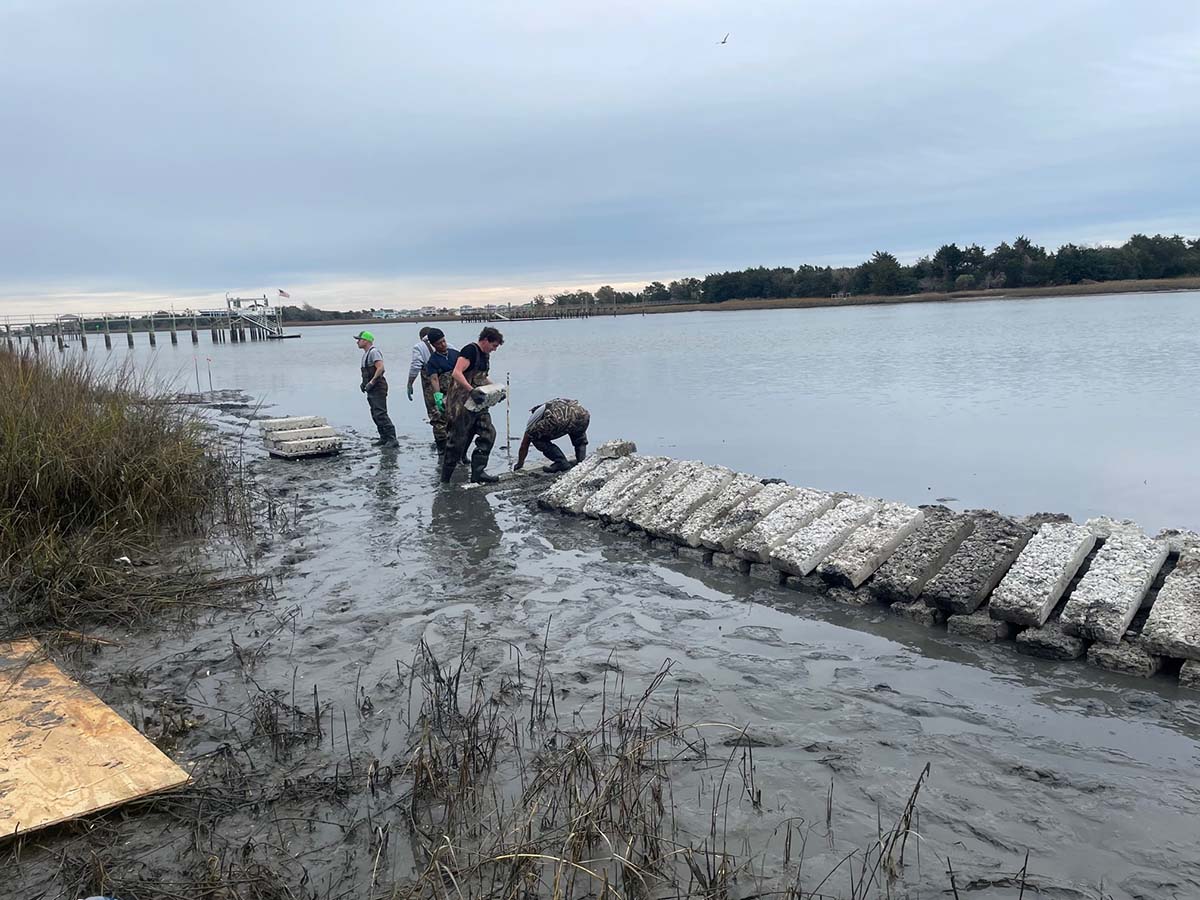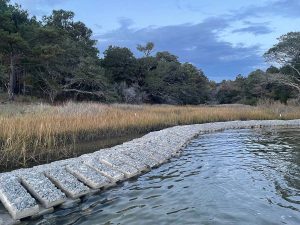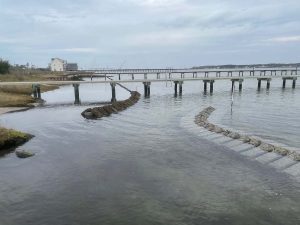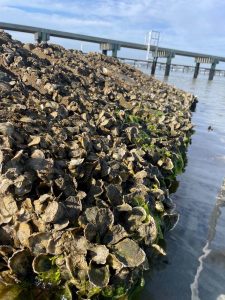
Adding Life to Shorelines
Published on May 1, 2023As marinas are aware, bulkheads are not foolproof in protecting property and eventually, they will fail. But as storms seem to be getting stronger and more prevalent, something must act as a barrier between powerful waves and surges and upland buildings and land. For some time now, the push has been to replace hardened structures with living shorelines, and that call is growing louder.
For generations, bulkheads and docks have defined marinas, so the move to living shorelines has been slow to catch on in this industry. There are some cases, such as where those bulkheads support boats and docks and don’t just protect the shore, where hardened structures are necessary, but for just about any other situation, a living shoreline is a sound alternative.
States Take Notice
States are taking notice. In some states, such as Virginia and Maryland, living shorelines are required unless the best available science says it can’t work. It is likely more states will look to make similar rules. Science has proven that bulkheads and seawalls are not only somewhat ineffective at stopping upland destruction, but they can negatively impact habitat, and cause erosion problems further down the shoreline.

NOAA defines a living shoreline as “a protected, stabilized coastal edge made of natural materials such as plants, sand, or rock.” What makes it “living” is that, unlike traditional seawalls or bulkheads that replace plants and habitats, living shorelines are meant to grow over time. Living shorelines are meant to provide a natural resilience to flooding and waves, and accompanying erosion. Plus, they help purify water, store carbon, provide habitat, and promote recreation.
Someone quite familiar with coastal science and policy, and in particular living shorelines, is Jeff Corbin who does policy and business development for Native Shorelines based in Raleigh, North Carolina. Corbin has been working to restore the Chesapeake Bay region for more than 25 years. Most of his time was spent working in policy and law with the U.S. Environmental Protection Agency (EPA) and the nonprofit Chesapeake Bay Foundation, but he decided he wanted to get back to the water and implement change. “There’s such a widespread need for coastal resiliency and that’s what Native Shorelines are all about. I really believe in this,” he said. Native Shorelines produces the patent-pending QuickReef, which is one of the latest living shoreline products to hit the market.
Materials and Installation
Corbin explained that while granite and cement blocks or riprap have traditionally been used effectively to replace bulkheads, as a “softer” approach, they lack the living feature as none are native to the environment in which they are placed. Conversely, QuickReef is made primarily from natural sources like limestone marl and oyster shells and only uses a small amount of cement as a binding agent. By using naturally found materials, QuickReef becomes a substrate for oyster recruitment and habitat for coastal species like crabs, mussels, and fish. While QuickReef is unique in the living shoreline category now, Corbin said he anticipates further innovation and more companies to come online as living shorelines catch on.

He further explained that installation is also a factor in how well a living shoreline adapts to an existing environment. “We can usually install it by hand, minimizing the need for heavy machinery and the resulting damage to upland areas,’ he said. Living shorelines are arranged in shallow waters of the intertidal zone and can also be designed as offshore sills, placed about 30 feet from the existing shoreline, that are submerged during high tides. Waves roll over the structures, reducing energy and depositing sediment behind the sill. Corbin said that Native Shorelines had been placing sand behind the sills and planting marsh grasses, but they discovered, in many instances, marsh accretion occurred naturally, and the grasses proliferated. As the marsh area grows it provides a larger buffer against waves. And because the shoreline is a living thing, unlike seawalls it can adjust its height and width to match seasonal needs, expanding in the wet seasons and reducing when it’s dry.
Living shorelines cannot be placed in every location. “Most will work in low to medium wave energy but if a marina sits on the Atlantic where you stare out to England, it probably won’t work,” Corbin said. However, living shorelines serve the exact same purpose as bulkheads to knock down and absorb energy to erase erosion forces. “Unless there’s enormous fetch and wave velocities, a living shoreline will work, especially for marinas that are often tucked out of the way. It works great for boat wakes,” he continued. He also said that he’s seen plenty of evidence that living shorelines resist the impact from storms much better than a hardened shoreline.
The Cost
The cost of living shorelines is comparable to building a bulkhead or riprap and oftentimes more inexpensive. “We’re a turnkey company. We make QuickReef, deliver the required permits, and do the installation for about $200 per linear foot,” Corbin said. Once it’s installed there are rarely follow-up costs since it is meant to work with the forces of nature. Native Shorelines has been doing installations for three years and has not had to return to any site. While Native Shorelines prefers to let nature deposit grasses, Corbin said the main item that might need to be addressed later in other types of living shorelines is if marsh grasses were planted behind the sill and for some reason don’t survive, they’d need to be replanted.

Bulkheads fail and looking down the road it appears likely storm surges, waves, and accompanying erosion will get worse, not better. “People need to consider whether to build for current conditions or future conditions. The concept of living shorelines won’t change, and coastal states are going to see sea level rise pretty quickly so the best thinking is to figure out what kind of sill and shoreline you’ll need to cover you for the next 20 years,” Corbin said.
Whether or not all states begin to require living shorelines, considering the installation of them seems to be the safest and most effective method to protect property well into the future.
| Categories | |
| Tags |






